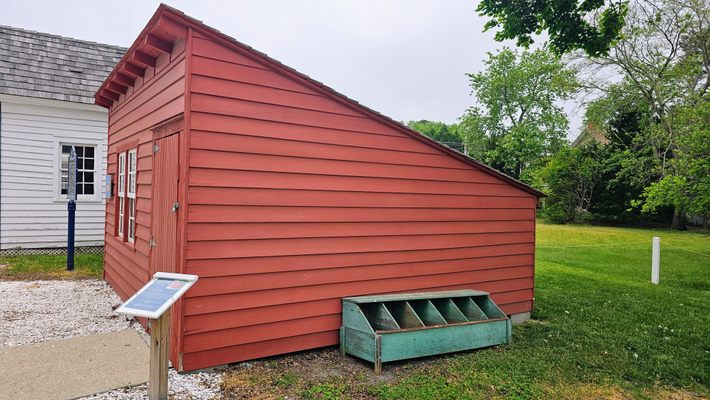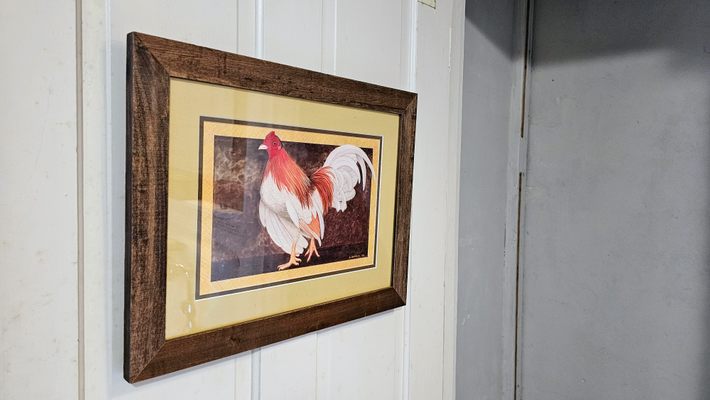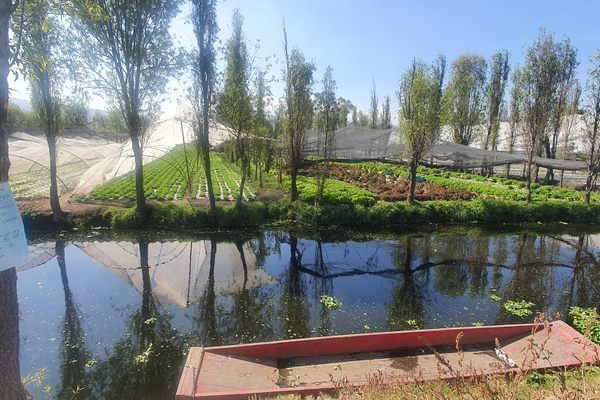About
What happens when you don't count your chickens before they hatch? In southern Delaware, one woman's answer to that question changed the world.In Ocean View, Delaware, a decimal place error that led Cecile Long Steele to found the broiler chicken industry is celebrated, and visitors can find a replica of the coop that started it all in Ocean View’s historic village.
The Ocean View of the 1920s was remote and desolate, and Cecile and her husband Wilmer were poor landowners, relying mostly on money that Wilmer earned from his time with the U.S. Coast Guard. In 1923, they purchased 50 baby chicks from a local supplier. In those days, chickens were mostly raised for their eggs, generally to feed one’s own family. Surplus eggs would be sold to make ends meet. To Mrs. Steele’s surprise, however, her order had a major error. She didn’t receive a shipment of 50 chicks—she found 500 chicks at her doorstep.
With 10 times more cheep labor than she ever intended, Cecile was at a crossroads. Storing the chicks in a piano box with no way to return them, she made a fateful decision. She would keep her 50 laying chickens in one coop, and raise the rest in another to sell for meat. She requisitioned a larger chicken shed from a Maryland woodworker, and raised the chicks to adulthood for 19 weeks. At the end of the year, she sold 387 surviving chickens for 62 cents a pound—a staggering profit.
The next year, she bought 1,000 chickens. In 1925, it was 10,000. She wasn’t alone. Her exploits didn’t just raise chickens, it raised attention. More than 50,000 broiler chickens were raised for meat in Sussex County, Delaware, in 1925, as families began to copy her strategy. One such family was that of Arthur W. Perdue. The Perdue family had previously sold table eggs, but he opened a hatchery in 1925 in nearby Salisbury, Maryland that launched a poultry empire. More than 500 families in the area were in chicken production by 1927, and they would collectively be known as the “Ocean View Hundred.”
It turns out the desire for chicken meat was almost insurmountable, and transportation and refrigeration had improved enough to meet the demand. For good or ill, the age of factory farming had begun. Chicken was on the menu everywhere, and Delmarva was the hub. 50 years after the start of the industry, more than 130 million chickens were raised in Delaware, and by 2020, more than 4 billion pounds of chicken meat came from Delaware alone. More controversially, as factory farming expanded beyond its family roots, the living conditions of the chickens that were raised correspondingly plummeted.
While Cecile Steele revolutionized agriculture from her one shed, she didn’t live long enough to see the extent of her work. By the 1930s, the Steeles had become wealthy and connected. Wilmer was a state senator, and together they bought a large house in Ocean View and a fancy yacht named The Lure. On October 7, 1940, The Lure exploded while the Steeles took guests out fishing. The guests survived, however, the Steeles were killed in the explosion. (For the record, the chief suspect was a faulty carburetor, not a vengeful chicken.)
Today in Ocean View, Cecile Steele’s life is celebrated across town, but especially at the local historic village. In the historic Evans-West House, also known since 2022 as the Coastal Towns Museum, a display retells the story of the mistake that led Delaware to become America’s chicken capital. Outside, a replica of Cecile Steele’s original chicken shed stands alongside other historic buildings and stories from the surrounding area.
Related Tags
Know Before You Go
The historic village and Coastal Towns Museum are free to visit, but check the website for the schedule or call for an appointment. You can also visit the Steele’s home at 84 Atlantic Avenue, as of 2024, it is a restaurant known as The Cafe On 26.
Visitors should be aware that the coop on display is a replica, however the Steele’s original shed still exists. It is on display at the Delaware Agricultural Museum, located in Dover.
Community Contributors
Added By
Published
July 3, 2024
Sources
- https://faculty.salisbury.edu/~mllewis/agriculture/chapter_eight.htm
- https://www.coastalpoint.com/news/business/agriculture/dca-shares-ocean-view-s-poultry-history/article_a6ccdac2-f829-11ee-8351-d724605a8259.html
- https://goodshepherdconservancy.org/a-fateful-accident/?v=914fddbcac3b
- https://www.agriculturalmuseum.org/cecile-long-steele
- https://www.agriculturalmuseum.org/poultry-exhibit
- https://npgallery.nps.gov/GetAsset/ba94d5dd-5222-4611-8730-f5773befc391































